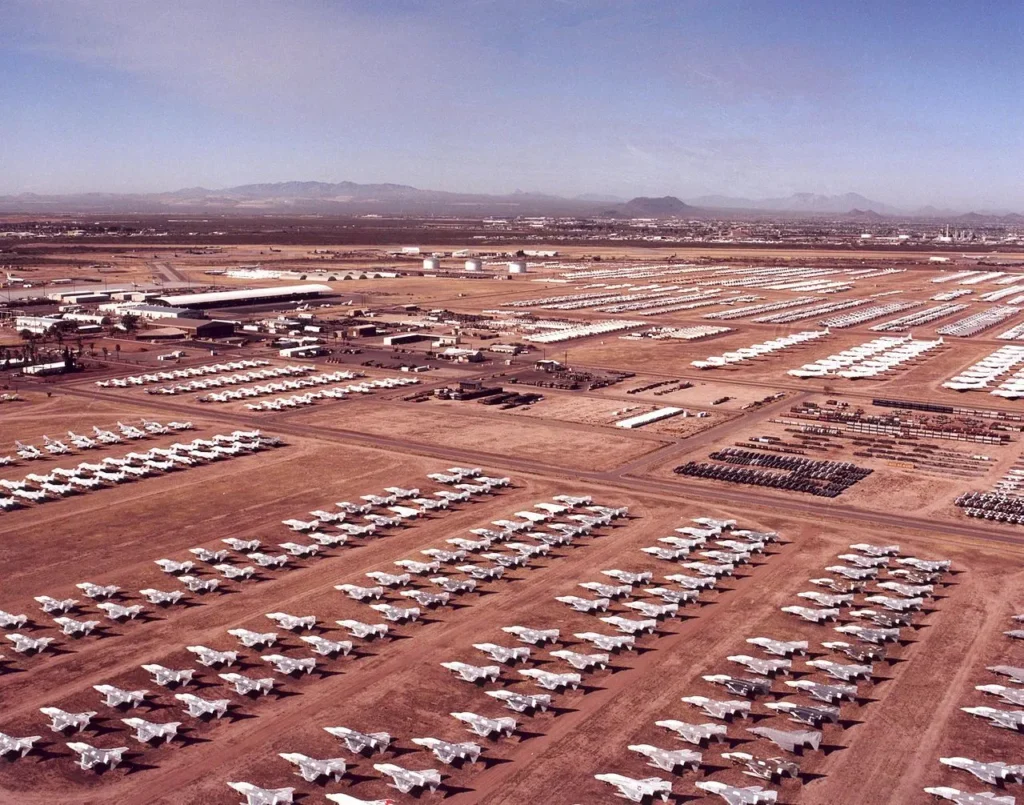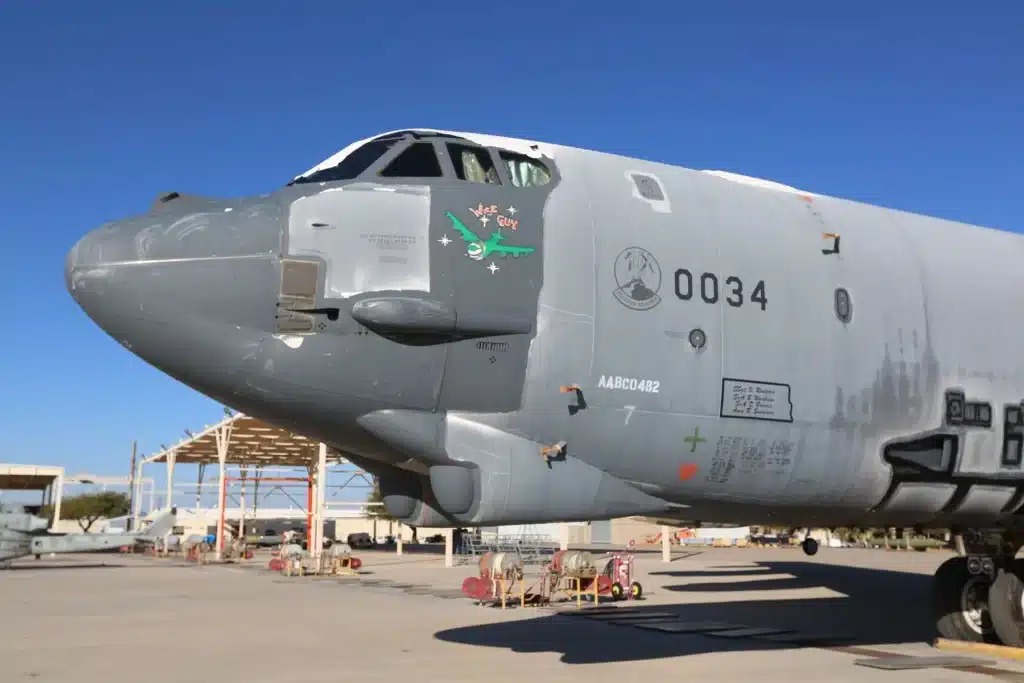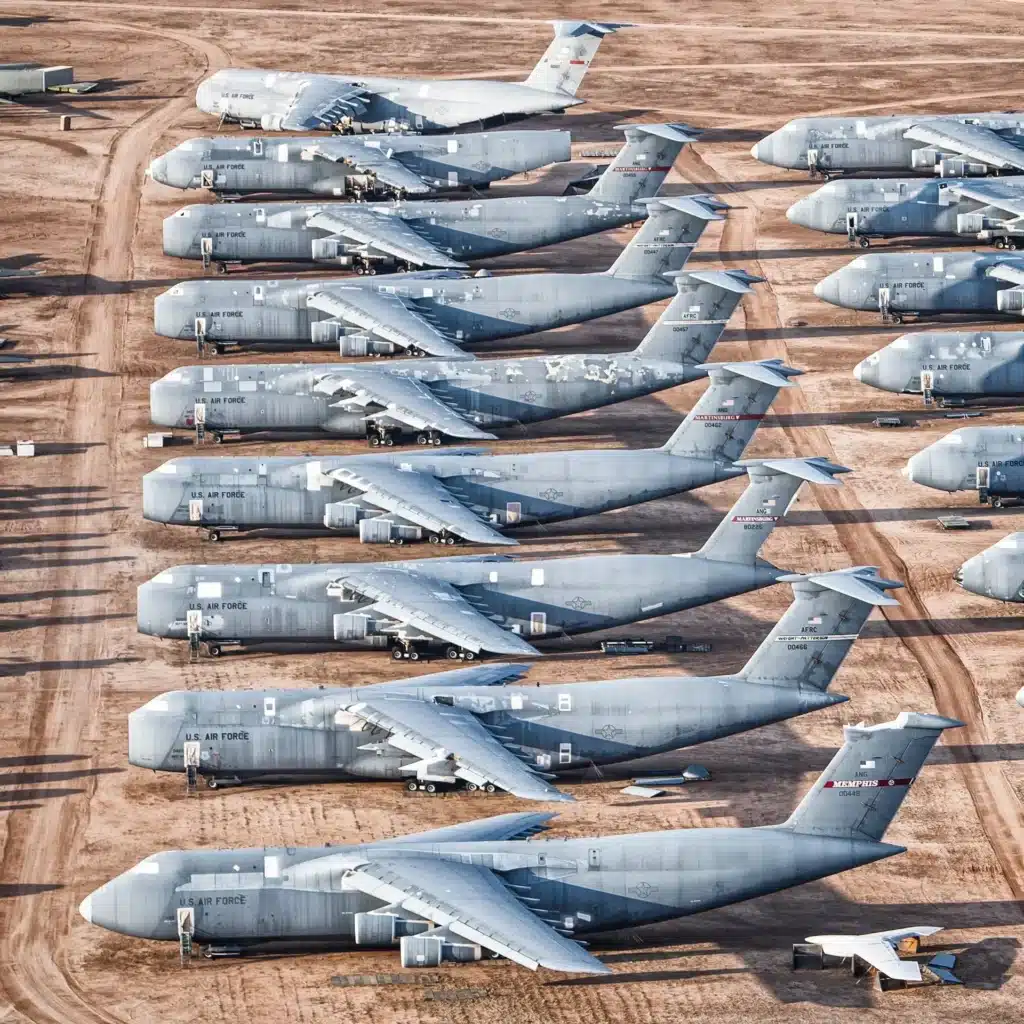World’s largest aircraft boneyard spans more than 2,600 acres and has over 4,000 planes
- Davis-Monthan Air Force Base near Tucson, Arizona is the world’s largest aircraft boneyard
- Spanning more than 2,600 acres, ‘The Boneyard’ is home to over 4,000 planes
- There’s all kinds of excess military and government aircraft, from planes to jets, helicopters to space shuttles, belonging to the Air Force, Marine Corps, Coasts Guard, and NASA
Published on Feb 05, 2024 at 7:21 PM (UTC+4)
by Adam Gray
Last updated on Feb 14, 2024 at 1:35 PM (UTC+4)
Edited by
Alessandro Renesis
Davis-Monthan Air Force Base just outside of Tucson, Arizona in the US has an unusual nickname.
Infamously known as ‘The Boneyard’, it spans more than 2,600 acres and is home to over 4,000 planes.
It’s so big and so packed, it’s actually set the world record for being the world’s largest military aircraft boneyard.
Whether you’re an aviation buff or not, The Boneyard is a fascinating place – the above video, captured by Chip Malt on Instagram, is testimony to this.

The Boneyard, formally known as the 309th AMARG (Aerospace Maintenance And Regeneration Group), is a boneyard facility for all excess military and government aircraft.
There’s all kinds of excess military and government aircraft, from planes to jets, helicopters to space shuttles, belonging to the Air Force, Marine Corps, Coasts Guard, and NASA that are processed at AMARG.
If you’re wondering why The Boneyyard is located where it is, there’s a simple answer.
Boneyard facilities are generally located in deserts, such as those in the Southwestern United States, since the dry conditions reduce corrosion and the hard ground does not need to be paved.

“With the area’s low humidity in the 10%-20% range, meager rainfall of 11″ annually, hard alkaline soil, and high altitude of 2,550 feet allowing the aircraft to be naturally preserved for cannibalization or possible reuse, Davis-Monthan is the logical choice for a major storage facility,” Airplane Boneyards reports.
David-Monthan Air Force Base’s role in the storage of military aircraft began after World War II and continues today.
More than 500 people are employed to take care of the thousands of aircraft that call this airfield their permanent residence.
Although the aircraft boneyard is the final destination for most of the warplanes that end up there, some do return to the sky.
For example, workers at the facility restored a B-52 bomber to active duty, after more than a decade in storage.

Workers are also preparing dozens of retired F-16 fighter jets to fly again, this time as full-sized “drone” aerial targets piloted by remote control.
Arguably The Boneyard’s most important mission is to serve as a giant, open-air parts warehouse for the U.S. military and others.
Just a shame you can no longer take a tour of the place.
DISCOVER SBX CARS: The global premium car auction platform powered by Supercar Blondie

Adam Gray is an experienced freelance motoring journalist and content creator based in the United Kingdom. Using his media accreditation with manufacturers’ press offices, Adam test drives the latest cars and attends new vehicle press launches, producing written reviews and news pieces for a variety of lifestyle and business publications. Here at Supercar Blondie, Adam applies his journalistic skills penning social-first content around current news and trends. When he’s not behind the wheel of the latest car or writing up another viral story, Adam can be found at his local rink playing ice hockey or at the Riverside Stadium supporting his beloved Middlesbrough FC.




